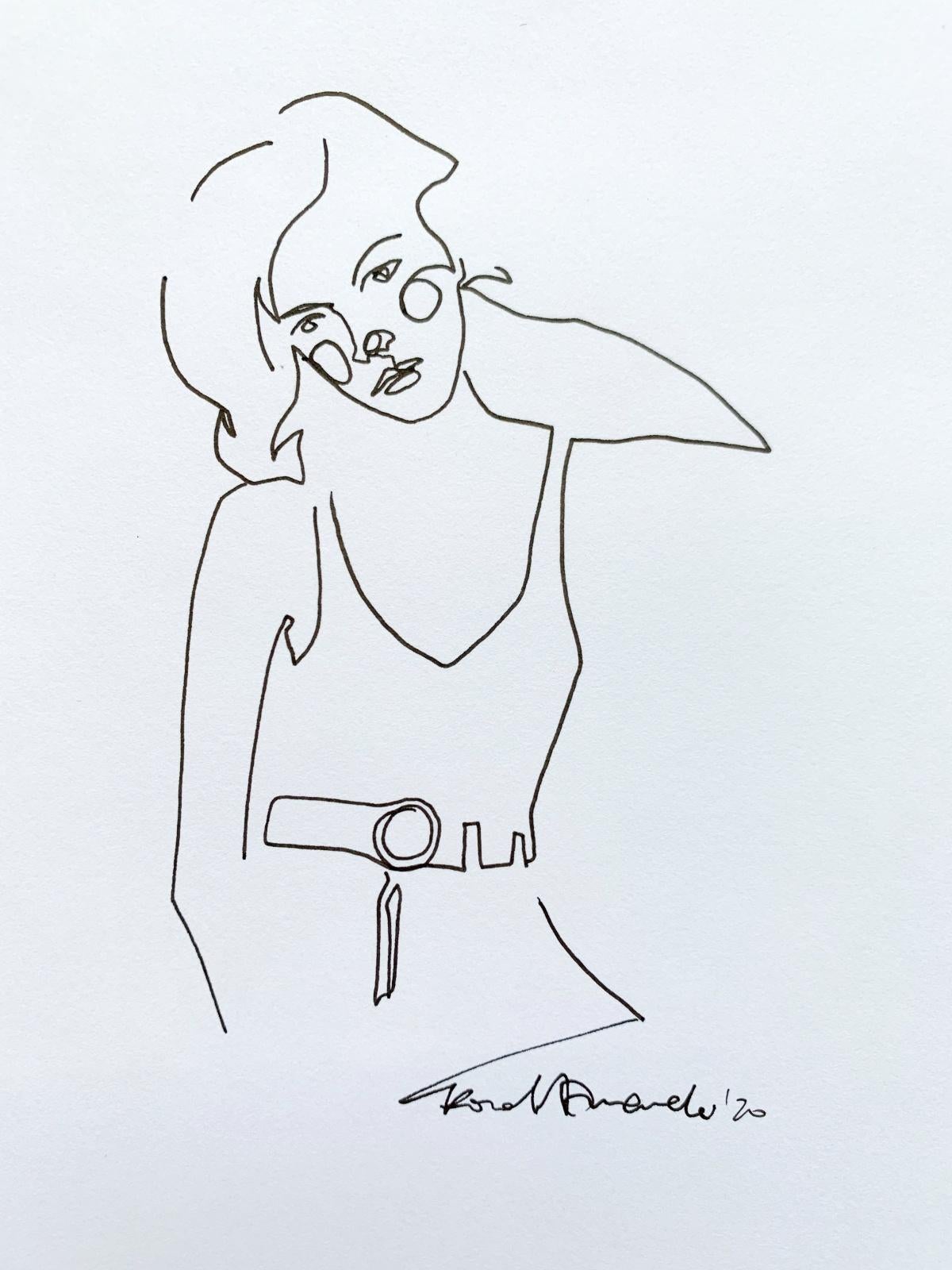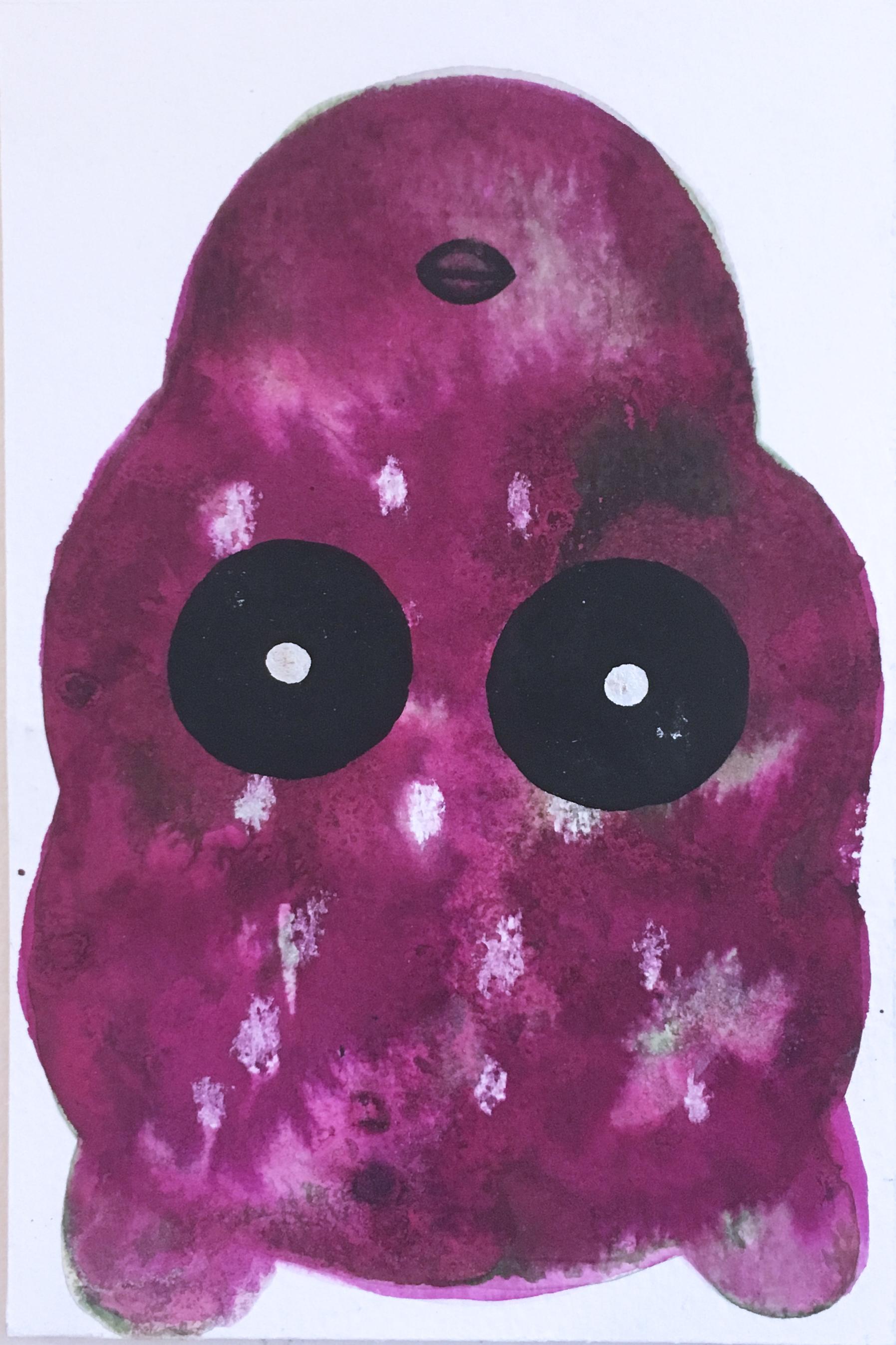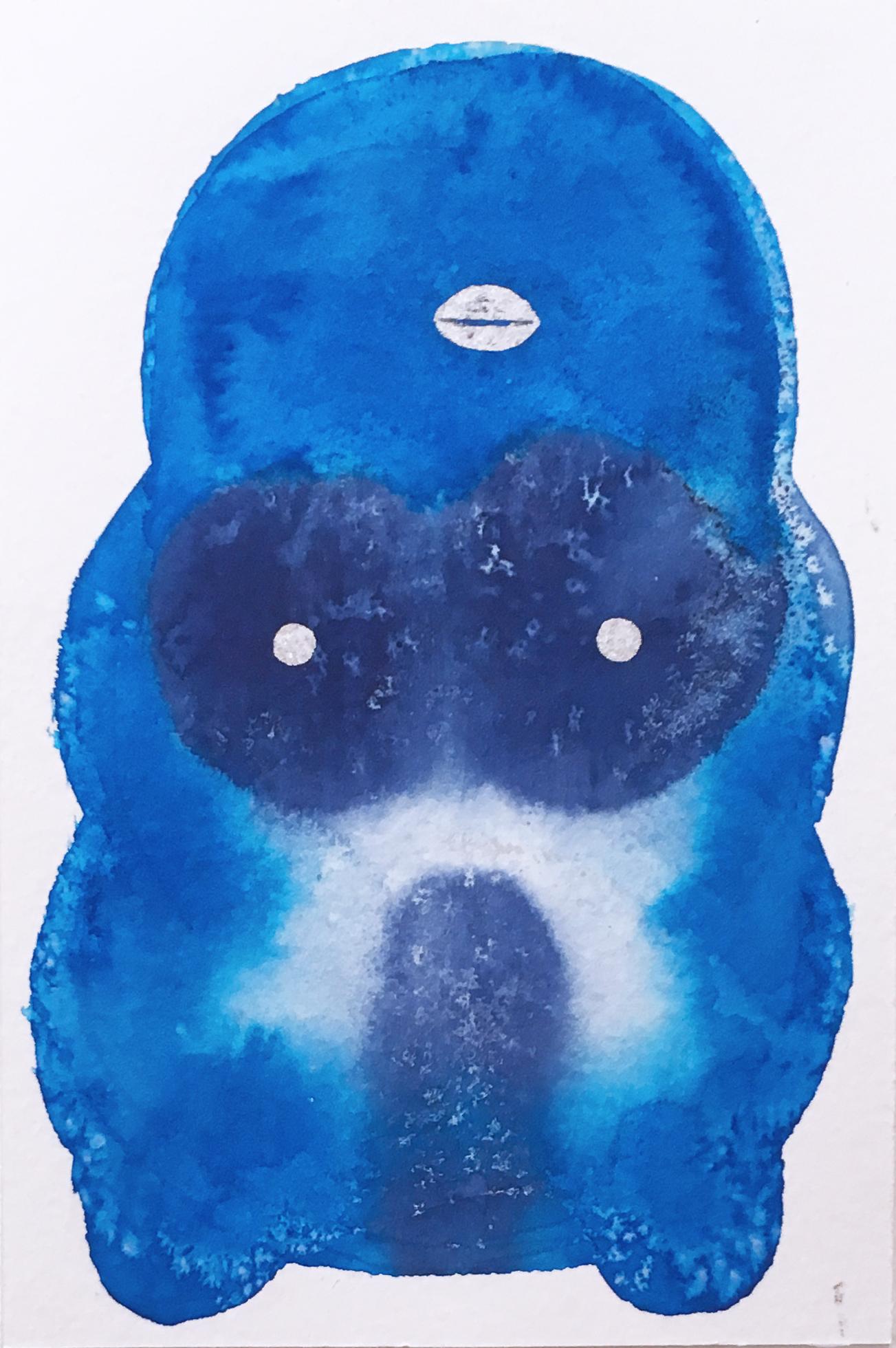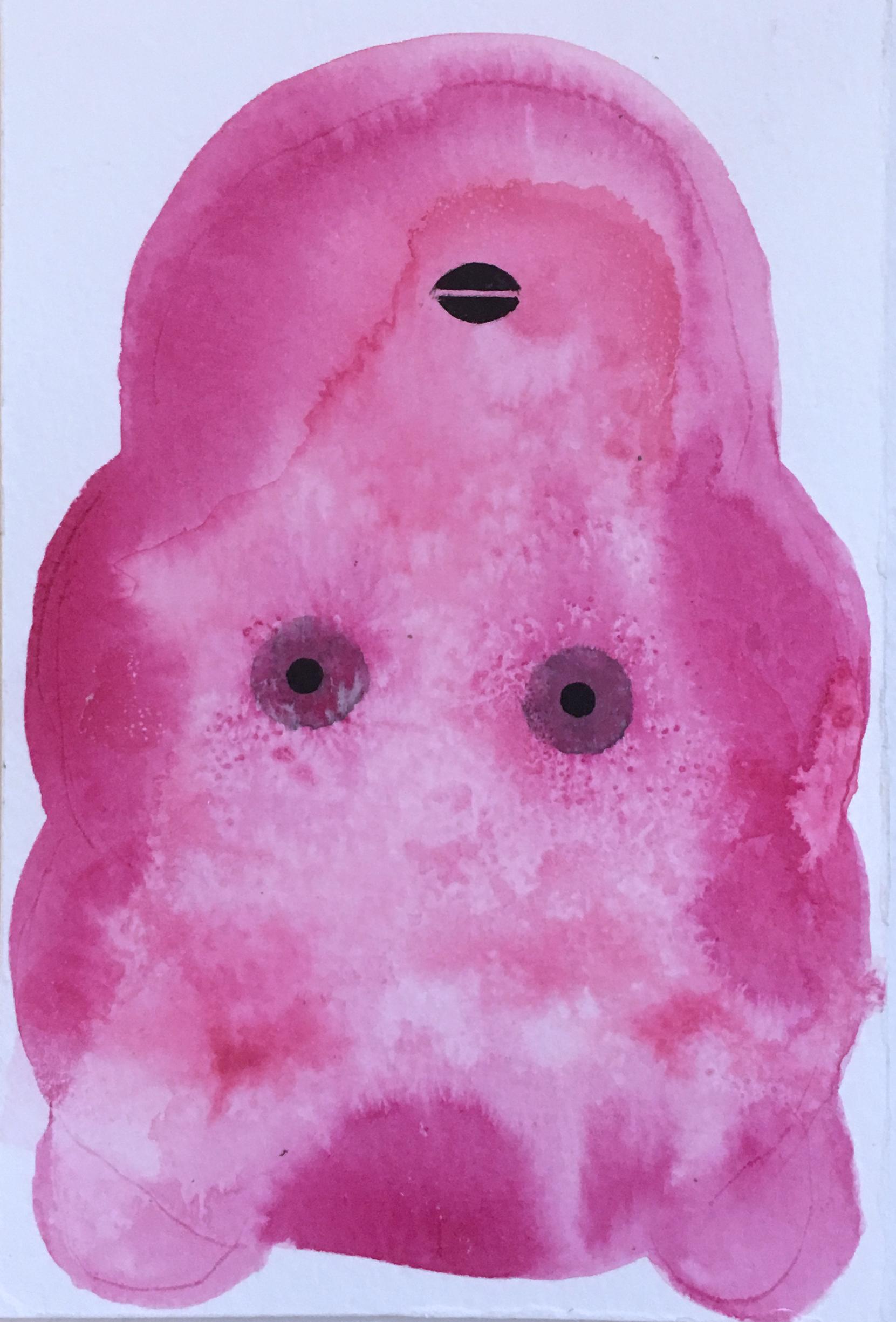Items Similar to Joseph McCarthy as Baby New Year on a Hobbyhorse
Want more images or videos?
Request additional images or videos from the seller
1 of 5
Reginald MarshJoseph McCarthy as Baby New Year on a Hobbyhorse circa 1950's
circa 1950's
About the Item
ink on beige
sight size: 254 x 317 mm.
PROVENANCE
Acquired directly from the artist by
Edward Laning (who inherited Marsh's studio) to
Jack Henderson (executor of Laning's estate) from whom acquired by
Private Collection, New York
Reginald Marsh was a painter, draughtsman, illustrator and etcher. He studied at Yale University where he contributed drawings and cartoons to the Yale Record. In the early 1920s he studied at the Art Students League in New York with John Sloan, George Bridgeman, George Luks and Kenneth Hayes Miller, while also working as a staff artist for the Daily News and a cartoonist at The New Yorker. During his sojourn at The New Yorker (1925-1931) Frank Crowninshield asked him to visit Coney Island and make a page of sketches for Vanity Fair, a place that he had never previously visited. Marsh fell in love with its crowds, sights and throbbing vitality which afforded him lifelong subject matter. All of New York City further captivated Marsh with its ever-changing landscape, especially the Bowery, Harlem, the harbor, its subways, burlesque shows and even the opera. From 1935 until his death in 1954 Marsh taught at the Art Students League. He was a member of the National Institute of Arts and Letters, National Academy of Design and the Royal Society of Artists in London. His work can be found in numerous museums throughout the United States. Due to his devotion to New York City, Marsh left his audience an unequaled recording of modern city life. Yet at the heart of his urban kaleidoscope lay humanity and this was always his ultimate subject. (1)
Starting in 1907 until 1943, Joseph Christian Leyendecker in the Saturday Evening Рost, depicted Baby New Year connected with current events. Reginald Marsh, an experienced cartoonist, continued this tradition by presenting Joseph McCarthy in the guise of Baby New Year on a Hobbyhorse "Riding one's hobbyhorse" is traditionally interpreted as talking about one issue incessantly in which the individual is excessively interested. Marsh must have created this work in early 1950’s when McCarthy dominated the American political scene.
(1) Biographical information taken from Edward Laning, The Sketchbooks of Reginald Marsh, New York Graphic Society Ltd., Greenwich, Connecticut, 1973, pp. 23, 48, 58; Norman Sasowsky, The Prints of Reginald Marsh, C.N., Potter, New York, c. 1976, pp. 9-10; Glen B. Opitz, ed., Mantle Fielding's Dictionary of American Painters, Sculptors and Engravers, Apollo Book, Poughkeepsie, New York, 1986, p. 584; and Deedee Wigmore, Reginald Marsh (1898-1954) Urban Realist Master of Many Media, catalogue D. Wigmore Fine Art Inc., New York 2008, pp. 5,7.
- Creator:Reginald Marsh (1898-1954, American)
- Creation Year:circa 1950's
- Dimensions:Height: 10.01 in (25.4 cm)Width: 12.49 in (31.7 cm)
- Medium:
- Period:
- Condition:
- Gallery Location:New York, NY
- Reference Number:1stDibs: LU2558212941562
About the Seller
No Reviews Yet
Vetted Seller
These experienced sellers undergo a comprehensive evaluation by our team of in-house experts.
Established in 1989
1stDibs seller since 2023
- ShippingRetrieving quote...Ships From: New York, NY
- Return PolicyThis item cannot be returned.
More From This SellerView All
- A View of Capodimonte and A View of Posillipo in Naples; Two DrawingsLocated in New York, NYPROVENANCE Mortimer Brandt, until 1993 and thus by descent in the family to Private Collection, Baltimore until the present time We would like to thank Charles Beddington for ident...Category
Late 17th Century Old Masters Landscape Drawings and Watercolors
MaterialsPen, Ink, Laid Paper
- Two SistersBy Flemish School, 17th CenturyLocated in New York, NYoil on canvas 46.7 x 37.2 inches (118.5 x 94.5 cm.) PROVENANCE Private Collection, Isle of Wight Two young sisters are posed on a portico backed by a rotund column with a landscape beyond. Although their identities are unknown their outfits as well as the setting denotes wealth and status. The older sister wears a gown of gold with blue and gold trim raised to reveal a green underskirt also edged with gold. Her collar tied at the neck and fastened over her shoulders by a large rosette of golden cloth, apron and cuffs over wide sleeves, are all of a sheer batiste linen trimmed with lace. Previously a child would not have been painted in a bib or apron above the age of three, but in the 1650s and 1660s it became fashionable for older girls. A leading string hangs from her right shoulder, which is also surprising given her age, but once their utility was gone, they were viewed as a decorative accessory and remained part of children’s costumes...Category
17th Century Old Masters Portrait Paintings
MaterialsOil
- A Boar Hound with a Joint of Meat Near an Enraged CatLocated in New York, NYsigned in the upper right Gio Batta Weenix oil on canvas 45 x 51 inches (114.5 x 129.5 cm.) PROVENANCE (possibly) Giovanni Baptista Weenix estate sale, Huis ter Mey, De Haar, Apr...Category
Mid-17th Century Old Masters Animal Paintings
MaterialsOil
- At Grandmother’sLocated in New York, NYsigned in the lower left Artz oil on canvas 26 x 19 ⅝ inches (66 x 50 cm.) PROVENANCE D. Sala & Zonen, Leiden , prior to 1936 Private Collection, Florida, circa 1968 until the present time Much like their seventeenth century counterparts, a group of painters known as the Hague School in the 1870s came to embrace as their subject matter the native Dutch landscape and the everyday lives of its rural inhabitants, most notably the fisher folk of the coastal villages. Within ten years the Hague School artists’ works would prove so popular that incredibly a mania for all things Dutch would be felt throughout the world, and would dominate the art in Holland until well after the turn of the century. By embracing simple themes remarkable for their ordinariness, the Hague School succeeded in striking a chord with a public whose own placidity was constantly being rattled by the evolving modernity of the times. Conveyed through the employment of subtle tones, hazy skies and subjects of happenstance their mix of nostalgia and realism enchanted viewers. The Hague became the center of the movement because it was semi-rural surrounded by meadows, polders, waterways, dunes and woods, and nearby Scheveningen provided a wealth of material for artists seeking to paint the shore and its fishing community. Jozef Isräels was considered the dean of the Hague School and David Adolphe Constant Artz his most important follower. Artz began his training in 1855 at the Amsterdam Academie under Louis Roijer and Johannes Egenberger, and would remain in Amsterdam until 1864. During this period, he would be influenced by August Allebé but more importantly a lifelong friendship with Jozef Israëls formed. In 1859 they traveled together to Zandvoort. He would also be the first of the Hague School artists to follow Isräels’ lead of working on the beach at Scheveningen. In 1859 Artz publically exhibited for the first time, taking part in the Tentoonstelling von Levende Meesters (Exhibition of Living Masters). In 1864 he left Amsterdam to live in Zweeloo, Drenthe for a year. From 1866 until 1874 he shared a studio with Jacob Maris and Frederick Hendrik Kaemmerer. He was one of the first of the Hague School artists to work in Paris (Jacob Maris having preceded him by one year) enabled by his patron and benefactor Johannes Kneppelhout. Artz created quite a commotion upon his arrival by including in his baggage a large collection of Scheveningen peasant costumes. As previously in Holland, Artz during his sojourn in Paris continued to paint beach scenes and interior views that featured the fishing communities of the North Sea. During this period Artz became interested in Japanese prints which had recently become available in Paris, and painted a few genre scenes of interiors with Japanese décor and subjects. While based in Paris he also traveled to Scotland from May-June 1869, Germany in November of that year, England in 1870 and Italy in January, 1872. By 1874 he returned to the Netherlands to live permanently in The Hague. Artz in his own time was held in high esteem by the public as well as his fellow artists. He was awarded gold medals at exhibitions in Munich and Vienna, as well as a Diploma and Medal of Honor in Dresden. In 1879 he was made Knight of the Oaken Crown of Luxembourg and in 1889 also became a Knight of the Order of St. Michael of Bavaria. In 1880 he received an Honorable Mention at the Salon in Paris and won a gold medal in 1883 at the International and Colonial Exhibition, Amsterdam. In Paris he was a member of the Société Nationale des Beaux Arts and a Chevalier of the Legion of Honor by 1889. He also served as Vice President of the International Jury of Award at the 1889 Exposition Universelle, Paris. In 1893 four works by Artz were chosen to be included in the World’s Columbian Exposition, Chicago. An American reviewer wrote of this show “The works of giants like Rembrandt, Van der Neer, Ruysdael, Holbein and Franz Hals are almost equaled now by masters like Israels, Mesdag, Bosboom, Maris, Mauve and Artz”. Artz’s entries A Girl Knitting, The Pet Lamb, Idle Hours on the Dunes and Girl Sleeping on the Dunes were listed under the category of “Immortal Works”. His works formed part of museum collections of Amsterdam (Rijksmuseum and Municipal Museum); Cambridge, England; Chicago; Dordrecht; Glasgow; Haarlem; The Hague (Gemeentemuseum and Mesdag Museum); Leewarden; Montreal; New York (Brooklyn and the Metropolitan Museum); Oxford; Rotterdam; St. Louis; Tulsa and Zandvoort. Much enamored with the picturesque dwellings of the rural population, a favorite subject of the Hague School was the depiction of a family group gathered around a table sharing a simple meal. Ronald de Leeuw in his introduction for The Hague School Book remarked that the group “derived poetry from a view of the kitchen”. Artz excelled at this type of interior scene in which every detail has been carefully recorded in emulation of his seventeenth century predecessors. Vincent van Gogh, an admirer of the Hague School in general and Artz in particular, wrote to his brother Theo in a letter dated Etten, Friday, August 26, 1881 about an exhibition in The Hague he had just visited in which he described a drawing by Artz of an “old man and woman eating porridge, very important, very good and serious.” There is a large version of At Grandmother’s (131.5 x 91.5 cm.) in the Rijksmuseum, Amsterdam. It was painted in 1883 and shown in an exhibition in The Hague in 1884 where it was purchased by the museum. This undoubtedly must have sparked interest in the composition and created a demand for the image to be replicated as several versions of the composition in varying sizes are recorded, and Artz was known for executing repetitions of his own works. Regarded as one of the highlights of the collection in the Philbrook Museum of Art in Tulsa, Oklahoma is another version by Artz of At Grandmother’s. The iconic nature of the image must have appealed to contemporaries as the perfect summation of the mix of idealism and realism that characterized these artists and their times. In a cottage under a wooden beamed ceiling a grandmother with her two granddaughters clothed in the traditional garb of Katwijk (where the artist spent his summers and maintained a cottage in the dunes) sit on wooden chairs around a gate-leg table in a kitchen sharing a simple meal of bread and an apple. The grandmother carefully slices a piece of bread while the younger girl looks on expectantly. Her sister sips milk from a small delftware bowl watching...Category
Mid-19th Century Dutch School Interior Paintings
MaterialsOil
- Brotherly LoveLocated in New York, NYsigned in the lower right Kever watercolor on paper 19 3/16 x 17 1⁄8 inches (49.2 x 43.7 cm.) PROVENANCE Dr. Katherine Kromm Merritt, Stamford, Connecticut, until circa 1990, from whom acquired by Private Collection, Vinalhaven, Maine, until 2015 In the warm morning glow of a country kitchen, a young boy entertains his little sister seated in a high chair. In return her adoring glance speaks volumes. The dramatic angling of the baby’s high chair, whose design harks back to the seventeenth century, animates the scene. Through an economy of means and a limited palette of largely brown and orange, Jacob Simon Hendrik Kever captures the richness of the moment and its idyllic rusticity. Josef Israels was the first to encourage Kever to study painting. He began his training at the Koninklijke Academie voor Beeldende Kunsten, Amsterdam, in 1869, studying with Petrus Franciscus Greive until 1872. From 1874 - 1875 he attended the Rijksakademie van Beeldende Kunsten, also in Amsterdam. From 1878-1879 under the tutelage of Charles Verlat he was enrolled in the Koninklijke Acaemie voor Schone Kunsten in Antwerp. His subjects included portraits, cityscapes, landscapes, flowers, genre and interior scenes in watercolors, oils, and etchings. Throughout his career he worked in Blaricum, Nunspeet, the province of North Brabant and Eemnes. Although not technically considered a member of the Laren School he also lived there from 1877-1879 and again in 1905-1922. He further maintained an apartment in Amsterdam near the Oosterpark where he resided during the winter months. The area must have constituted somewhat of an artist’s community as his neighbors were Geo Poggenbeek, Nicolaas Bastert and later Willem Witsen...Category
Late 19th Century Dutch School Interior Paintings
MaterialsWatercolor
- A Basset HoundBy Jules MoigniezLocated in New York, NYinscribed J. Moigniez bronze with brown patina, cast during the artist’s lifetime height 18 1⁄2 inches (47 cm.), width 29 1⁄8 inches (74 cm.) PROVENANCE James Graham & Sons, Inc., N...Category
Late 19th Century French School Figurative Sculptures
MaterialsBronze
You May Also Like
- Deep Blue VenusBy Shamona StokesLocated in Jersey City, NJDeep Blue Venus, 2020, watercolor, ink, mirror paint, and salt on Arches paper. Venus of Willendorf, fertility goddess, blue, cobalt blue, and whit...Category
2010s Contemporary Figurative Drawings and Watercolors
MaterialsPaper, Ink, Watercolor
- Electric Moss VenusBy Shamona StokesLocated in Jersey City, NJElectric Moss Venus, 2020, watercolor, mirror paint, ink, and salt on Arches paper. Venus of Willendorf, green, blue, silver.Category
2010s Contemporary Figurative Drawings and Watercolors
MaterialsPaper, Ink, Acrylic, Watercolor
- Four Years (Darth Vader) (2022) by street artist City Kitty, graffiti MTA posterLocated in Jersey City, NJ"Four Years of Frustration, Delays & Missed Appointments (Darth Vader)" (2022) by street artist City Kitty 18.25 x 12.25 x .75" Ink, acrylic and color pencil on MTA poster...Category
2010s Street Art Figurative Drawings and Watercolors
MaterialsPaper, Ink, Acrylic, Color Pencil
- Four Years (Ecstasy) (2019) by street artist City Kitty, graffiti MTA posterLocated in Jersey City, NJ"Four Years of Frustration, Delays & Missed Appointments (Ecstasy)" (2019) by street artist City Kitty 18.25 x 12.25 x .75" Ink, acrylic and color pencil on MTA poster...Category
2010s Street Art Figurative Drawings and Watercolors
MaterialsPaper, Ink, Acrylic, Color Pencil
- Four Years (Bob Ross) (2019) by street artist City Kitty, graffiti MTA posterLocated in Jersey City, NJ"Four Years of Frustration, Delays & Missed Appointments (Bob Ross, cat)" (2019) by street artist City Kitty 18.25 x 12.25 x .75" Ink, acrylic and color pencil on MTA poster...Category
2010s Street Art Figurative Drawings and Watercolors
MaterialsPaper, Ink, Acrylic, Color Pencil
- Four Years (One Earth) (2020) by street artist City Kitty, graffiti MTA posterLocated in Jersey City, NJ"Four Years of Frustration, Delays & Missed Appointments (One Earth)" (2022) by street artist City Kitty 18.25 x 12.25 x .75" Ink, acrylic and color pencil on MTA poster...Category
2010s Street Art Figurative Drawings and Watercolors
MaterialsPaper, Ink, Acrylic, Color Pencil





